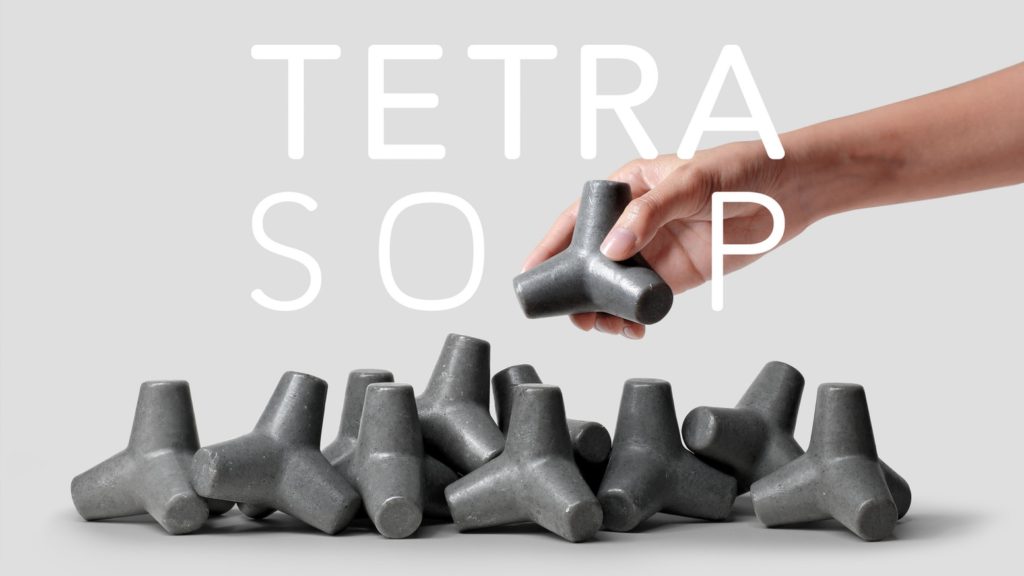
In 1950, two French engineers, Pierre Danel and Paul Anglès d’Auriac, developed and patented the tetrapod, which is an interlocking, four-footed concrete shape that they proposed for use in sub-aqueous walls. Used to protect seashores worldwide, tetrapods accumulate to form robust sea walls that alleviate coastal erosion by dispersing wave forces around their shapes while remaining stable due to their interlocking ability.

More than a half-century later, a Hong Kong-based company called Furnitury incorporated the same form for its Tetra Soap products. That’s because soap is slippery, according to a Tetra Soap video the company used in its Kickstarter promotional materials. The tetrapod shape of the soaps interlocks perfectly with our pentadactyl limbs, allowing for ease of grip without the ungainly appendage of a rope. To make the the soaps, a mixture of palm, coconut, and extra virgin olive oils blended with myrrh and sandalwood is poured into formwork that yields the tetrapod shape; once formed, the soaps are then cured for 30 days.

Tetra Soap is available for purchase individually, in trios, or as a miniature sea wall set of 12.
H/T to Dezeen.
